How To Adjust Display Brightness Settings Easily in Windows [2025]
If your screen is overly bright or dim, it can strain your eyes and make tasks uncomfortable. Fortunately, Windows offers simple tools to fine-tune your display brightness. Despite how easy it is, many users aren’t aware of these quick fixes.
Windows has many built-in tools to help you. You can change brightness with just a few clicks. Some methods work better than others. Different computers may have different options. But most Windows computers support basic brightness controls.
This guide presents 11 straightforward ways to adjust your screen brightness. It also covers how to automate brightness adjustments in Windows. All methods are compatible with both Windows 10 and Windows 11, so you can choose the one that suits your device best.
Part 1: Precautions To Take Before Performing These Steps
Before you start changing brightness settings, take some safety steps.
- Check your power settings – Make sure your laptop has enough battery
- Note your current brightness level – Write down what works now
- Check for Windows updates – New updates can fix brightness bugs
- Close running programs – This prevents crashes during changes
- Have your computer manual ready – Some steps may need specific info
- Test changes in good lighting – Don’t adjust in very dark or bright rooms
Part 2: 11 Ways To Adjust Display Brightness Settings Easily / Automatically in Windows
Windows gives you many options to control screen brightness. Some methods are quick and simple. Others offer more control and features. The best method depends on your computer type and personal needs.
Today’s computers come equipped with automatic brightness control, which adapts screen brightness according to ambient light conditions. Built-in sensors monitor the surrounding illumination and adjust the display accordingly. This not only helps conserve battery life but also reduces eye strain for a more comfortable viewing experience.
Method 1: Using Function Keys
Function keys offer the quickest method for adjusting screen brightness. On most laptops, you’ll find dedicated keys—often marked with sun icons—that make it easy to increase or decrease brightness instantly.
This approach is compatible with nearly all laptops. It’s fast, bypasses any menu navigation, and applies changes instantly. A brightness indicator appears on the screen, making adjustments visible in real time. Users generally find it simple and highly convenient.
How it helps:
- Works instantly without opening any programs
- Displays the current brightness level on-screen in real time as you make adjustments.
- Available on most laptop keyboards by default
Steps:
Step 1: Look for brightness keys on your F-row (usually F1, F2, or arrow keys with sun symbols).
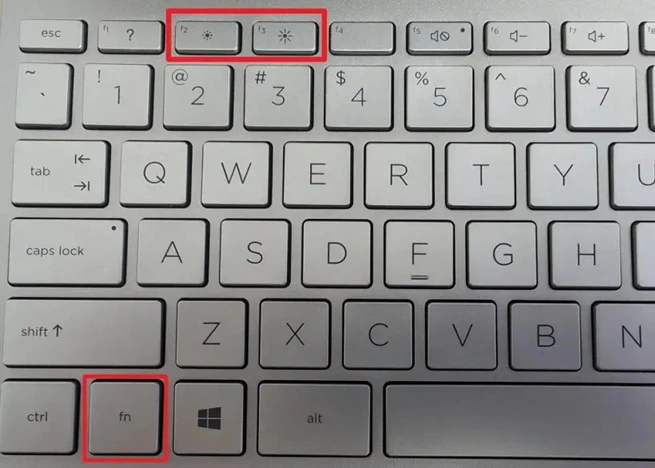
Step 2: Hold down the Fn key and tap the designated brightness key to adjust your screen’s brightness up or down.
Method 2: Windows Settings Panel
The Settings panel gives full control over brightness. You can adjust it precisely. Automatic brightness can also be enabled. It’s the main hub for display settings. All options are in one place.
You can set the brightness for different power modes. This helps save battery.
How it helps:
- Provides precise brightness control with a slider
- Works on all Windows computers, including desktops
- Offers automatic brightness options in the same location
Steps:
Step 1: Press Windows key + I, then click on “System” and select “Display”.
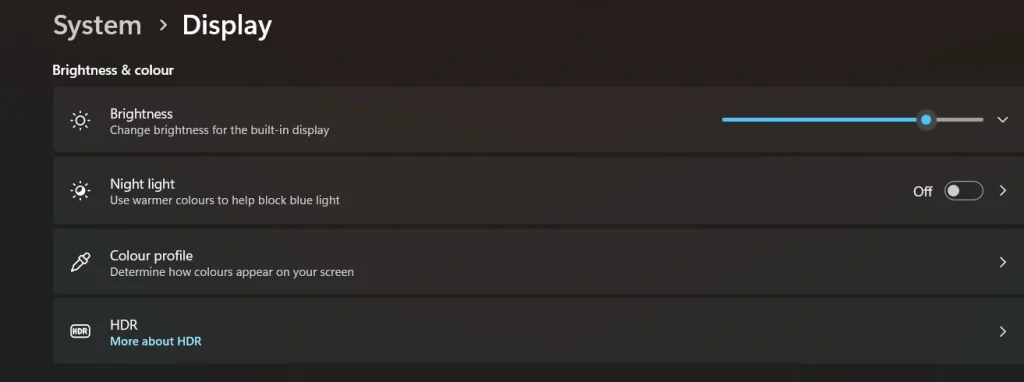
Step 2: To quickly modify your screen’s brightness in Windows, simply drag the slider located under the ‘Brightness and Color’ section.
Method 3: Action Center Quick Settings
Action Center puts brightness control at your fingertips. Click the notification icon to open it. The brightness tile is right there. This method is faster than opening the full Settings.
Quick settings save time when you need fast changes. You don’t need to navigate through menus. The brightness tile shows the current level. You can adjust it with one click. This feature works the same on all Windows versions.
How it helps:
- Accessible from any screen with one click
- Shows the current brightness percentage clearly
- No need to open multiple windows or menus
Steps:
Step 1: Click the notification icon in the bottom-right corner or press Windows + A.
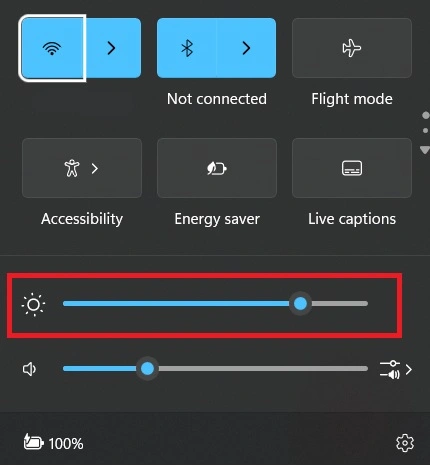
Step 2: Click on the brightness tile to cycle through brightness levels
Method 4: Control Panel Display Settings
Control Panel offers advanced brightness options. This is the old-style Windows interface. Some computers only work with this method. It gives you more technical controls than modern Settings.
How it helps:
- Compatible with older display drivers and hardware
- Provides additional advanced display configuration options
- Works when the modern Settings app has problems
Steps:
Step 1: Open Control Panel. Then, select “Power Options” from the list.
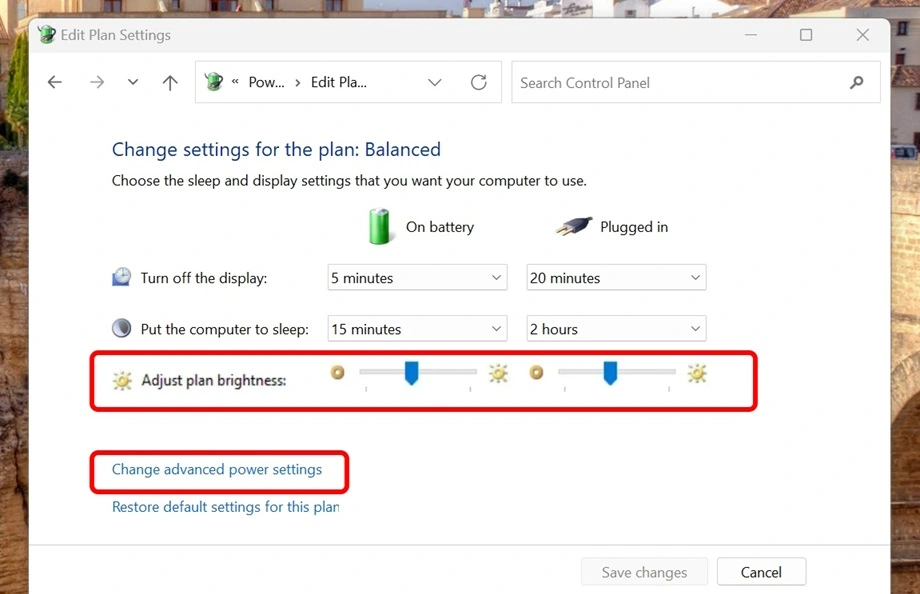
Step 2: Select “Change plan settings” and adjust the display brightness slider
Method 5: Power Options Menu
You can change screen brightness depending on the power mode using Power Options. Set different levels for battery and plugged-in use. You can set one level for battery use and another for when plugged in. This helps save battery. Each power plan remembers your settings automatically.
Power plans are smart ways to manage computer energy. Each plan can have different brightness levels. This means you can adjust display brightness automatically in Windows based on the power source. Your laptop will dim on battery to save power.
How it helps:
- Automatically adjusts brightness based on power source
- Extends battery life by dimming the screen when unplugged
- Saves custom brightness settings for each power plan
Steps:
Step 1: Right-click the battery icon in the system tray and select “Power Options.”
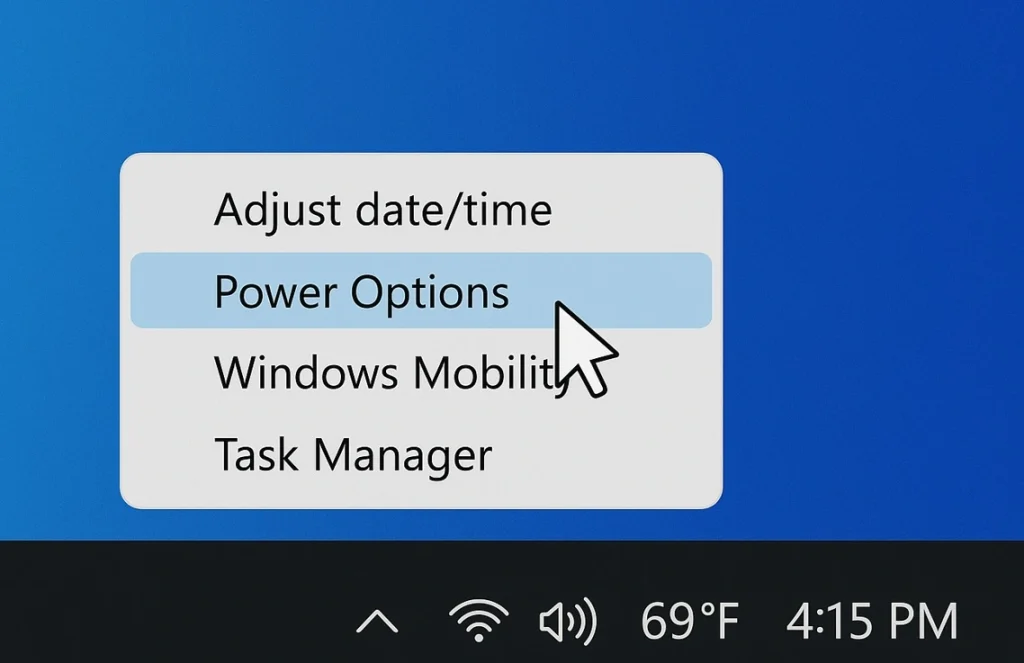
Step 2: Click “Change plan settings” next to your current plan and adjust the brightness sliders
Method 6: Keyboard Shortcut Keys
Some Windows versions support brightness shortcuts. These work without function keys. Press the Windows key with the plus or minus keys. This method works on desktop computers, too.
Keyboard shortcuts are universal controls. They work even when other methods fail. You don’t need special laptop keys. Any keyboard can use these shortcuts. They’re helpful when function keys are broken.
How it helps:
- Works on desktop computers without special brightness keys
- Functions even when display drivers have issues
- Provides quick access using any standard keyboard
Steps:
Step 1: Press Windows key + Plus key to increase brightness.
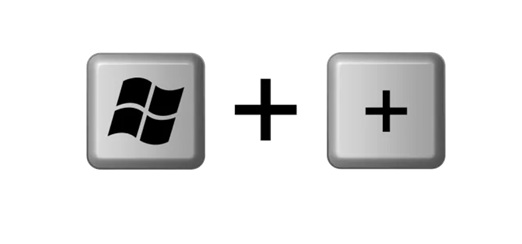
Step 2: Press Windows key + Minus key to decrease brightness
Method 7: Graphics Card Software
Your graphics card may have brightness controls. NVIDIA and AMD both offer control panels. These programs give you advanced options. They work better than Windows controls sometimes.
Graphics card software connects directly to your display hardware. This gives more precise control over brightness. Professional users often prefer these tools. They offer color correction and brightness calibration features.
How it helps:
- Provides professional-grade brightness and color controls
- Works directly with graphics hardware for better performance
- Offers advanced calibration tools for accurate displays
Steps:
Step 1: Right-click the desktop and select your graphics control panel (NVIDIA Control Panel or AMD Radeon Settings).
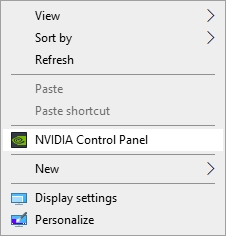
Step 2: Navigate to display settings and adjust brightness using the provided slider.
Method 8: Windows Mobility Center
The Mobility Center is designed for laptop users. It puts all mobile settings in one place. Brightness control is prominently featured. This tool is perfect for people who travel with laptops.
Windows created Mobility Center for portable computers. It shows battery, volume, and brightness together. You can adjust multiple settings quickly. This saves time when moving between locations with different lighting.
How it helps:
- Combines brightness with other laptop settings in one window
- Designed specifically for mobile computer usage
- Shows multiple system status indicators together
Steps:
Step 1: Press Windows key + X and select “Mobility Center” from the menu.
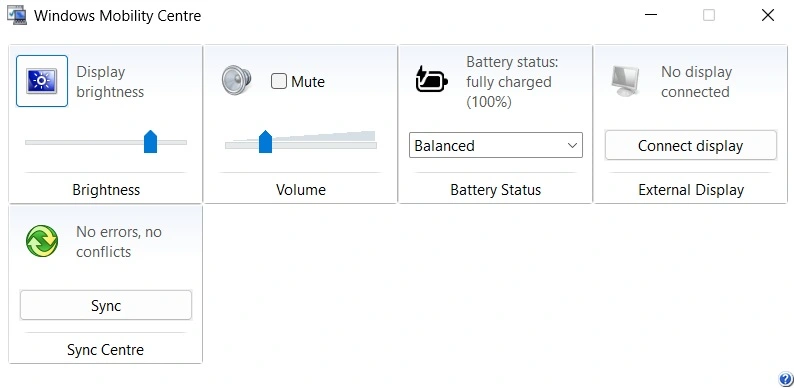
Step 2: Use the brightness slider in the “Display brightness” tile
Method 9: Third-Party Brightness Apps
Third-party apps offer extra brightness features. Some apps can make screens dimmer than Windows allows. Others add scheduling features. These apps help users with special brightness needs.
Some people need very specific brightness controls. Third-party apps fill this gap. They can schedule brightness changes throughout the day. Some apps work with multiple monitors better than Windows’ built-in tools.
How it helps:
- Extends brightness range beyond Windows default limits
- Offers scheduling and automation features not in Windows
- Provides better multi-monitor brightness management
Steps:
Step 1: Download and install a brightness control app like f.lux.
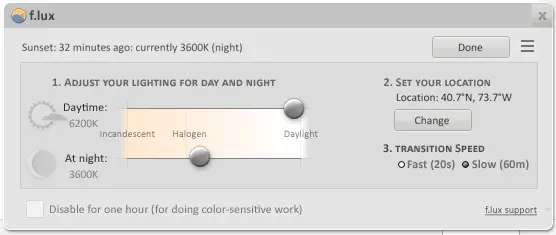
Step 2: Configure brightness settings and automation rules within the app
Method 10: Registry Editor Method
Registry Editor gives advanced users complete control. This method works when other options fail. Only experienced users should try this method. It requires careful attention to avoid problems.
Windows Registry stores all system settings. Brightness controls are stored here, too. Direct registry editing bypasses normal restrictions. This method can fix broken brightness controls. But it requires technical knowledge to use safely.
How it helps:
- Fixes brightness problems when normal methods fail
- Provides complete control over brightness behavior
- Can restore brightness controls on problematic systems
Steps:
Step 1: Press Windows + R, type “regedit” and navigate to brightness-related registry keys.
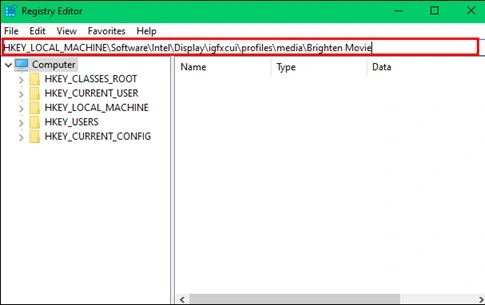
Step 2: Modify brightness values carefully and restart the computer to apply changes
Method 11: Command Prompt/PowerShell
Command-line tools offer script-based brightness control. Developers and advanced users prefer this method. You can create automated brightness scripts. This method works great for remote computer management.
Command-line brightness control is very powerful. You can write scripts to change brightness automatically. IT professionals use this for managing many computers. Scripts can adjust brightness based on time or other conditions.
How it helps:
- Enables automation and scripting of brightness changes
- Works for remote computer management and IT administration
- Provides integration with other system automation tools
Steps:
Step 1: Open Command Prompt as administrator and type brightness control commands.
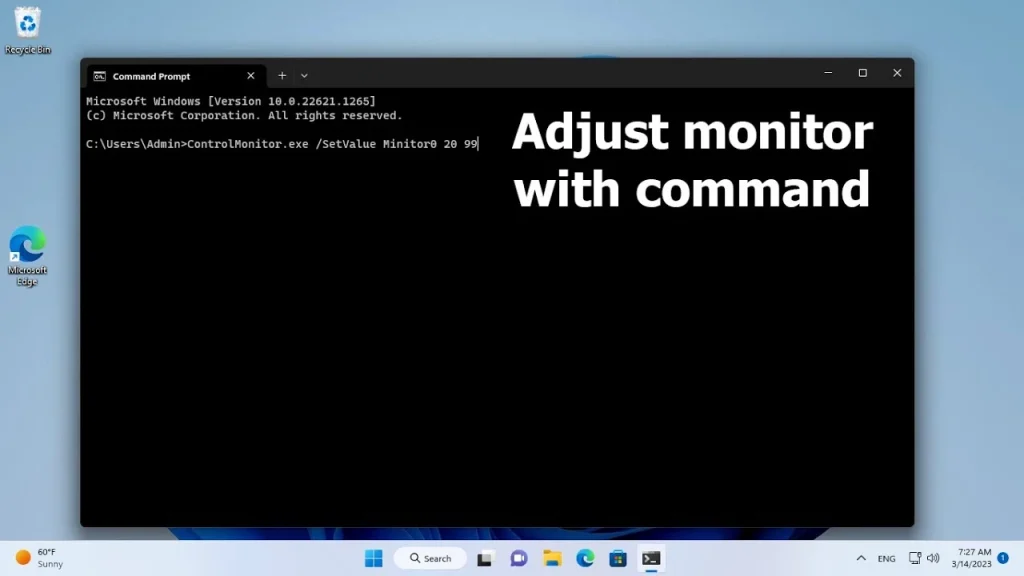
Step 2: Execute powershell scripts to adjust display brightness settings easily in Windows programmatically
Author’s Tip
The best brightness method depends on your computer type and usage. Laptop users should start with the function keys. They’re the fastest for daily use. Desktop users should use the Windows Settings panel for precise control.
Set up automatic brightness if your computer supports it. This feature adjusts brightness based on room lighting. It protects your eyes and saves battery power. The sensors work best in normal indoor lighting conditions.
Keep your display drivers updated for the best brightness control. Old drivers cause many brightness problems. Windows Update usually installs the right drivers automatically. Check manufacturer websites for the newest versions if you have issues.
Conclusion
Learning to adjust display brightness settings easily in Windows improves your computer experience. Proper brightness reduces eye strain and saves battery life. These 11 methods work on different Windows computers and situations.
Start with the simplest methods first. Function keys and the Settings panel work for most users. Try advanced methods only if simple ones don’t work. Remember to update your drivers if brightness controls aren’t working properly.
Good brightness control makes computer work more comfortable. Your eyes will feel better during long work sessions. Battery life improves when you optimize brightness settings. Take time to find the brightness level that works best for you.
FAQs
Q1: Why won’t my brightness keys work on my laptop?
Your brightness keys might not work due to missing or outdated drivers. Function key software may not be installed on your computer. Some laptops need special manufacturer software to enable brightness keys. Try updating your display drivers through Device Manager or Windows Update. Check your laptop manufacturer’s website for specific function key software. If drivers are current, try using the Windows Settings panel instead of the function keys.
Q2: How do I set automatic brightness that actually works well?
To adjust display brightness automatically in Windows effectively, make sure your device has an ambient light sensor. Go to Settings > System > Display and turn on “Change brightness automatically when lighting changes.” Place your computer where the sensor can detect room lighting properly. Avoid covering the sensor with stickers or cases. The sensor usually works best in normal indoor lighting conditions. Calibrate it by manually adjusting brightness in different lighting situations first.
Q3: Can I make my screen darker than the minimum Windows brightness setting?
Yes, you can make your screen darker using third-party software or graphics card controls. Apps like f.lux or Dimmer can reduce brightness below Windows limits. Graphics card software from NVIDIA or AMD often allows lower brightness levels. Some monitors have hardware brightness controls that go lower than software settings. Night light features in Windows can also reduce blue light and perceived brightness. These methods help people who are sensitive to bright screens.
Popular Post
Recent Post
How To Get More Storage On PC Without Deleting Anything [2025]
Running out of space on your PC is frustrating. You might think deleting files is the only way. But that’s not true. There are many ways to get more storage without losing your important data. Learning how to get more storage on PC can save you time and stress. These methods work well and keep […]
How To Speed Up An Old Laptop [Windows 11/10]: Complte Guide
Is your old laptop running slowly? You’re not alone. Many people face this issue as their computers age. Learning how to speed up an old laptop is easier than you think. Over time, older laptops tend to slow down for a variety of reasons. Fortunately, with a few smart tweaks, you can significantly boost their […]
How To Reset Your PC For A Fresh Start In Windows 11/10 [2025]
Is your Windows computer lagging or behaving unpredictably? Are you constantly dealing with system errors, crashes, or sluggish performance? When troubleshooting doesn’t help, performing a full reset might be the most effective way to restore stability. Resetting your PC clears out all installed applications, personal files, and custom settings. It restores the system to its […]
How To Adjust Display Brightness Settings Easily in Windows [2025]
If your screen is overly bright or dim, it can strain your eyes and make tasks uncomfortable. Fortunately, Windows offers simple tools to fine-tune your display brightness. Despite how easy it is, many users aren’t aware of these quick fixes. Windows has many built-in tools to help you. You can change brightness with just a […]
How to Uninstall Problematic Windows Updates Easily [2025]
Learn how to uninstall problematic Windows updates easily. 5 proven methods to fix crashes, boot issues & performance problems. Simple step-by-step guide.
15 Most Essential Windows 11 Privacy And Security Settings [2025]
Learn 15 essential Windows 11 privacy and security settings to protect your data. Master computer privacy settings with simple steps to manage privacy settings effectively.
Rename Your Device For Better Security Windows [Windows 11 & 10]
Learn to rename your device for better security Windows 11 & 10. Simple steps to protect your computer from hackers. Improve privacy and security now.
How To Adjust Display Appearance Settings Easily in Windows 11/10
Learn to adjust display appearance settings easily Windows offers. Simple guide covers brightness, scaling, resolution & multi-monitor setup for better screen experience.
Supercharge Your Productivity: A Solopreneur’s and SMB’s Guide to Mastering Google Workspace with Gemini’
Picture this. It’s Monday morning. You open your laptop. Email notifications flood your screen. Your to-do list has 47 items. Three clients need proposals by Friday. Your spreadsheet crashed yesterday. The presentation for tomorrow’s meeting is half-finished. Sound familiar? Most small business owners live this reality. They jump between apps. They lose files. They spend […]
9 Quick Tips: How To Optimize Computer Performance
Learn how to optimize computer performance with simple steps. Clean hard drives, remove unused programs, and boost speed. No technical skills needed. Start today!


























